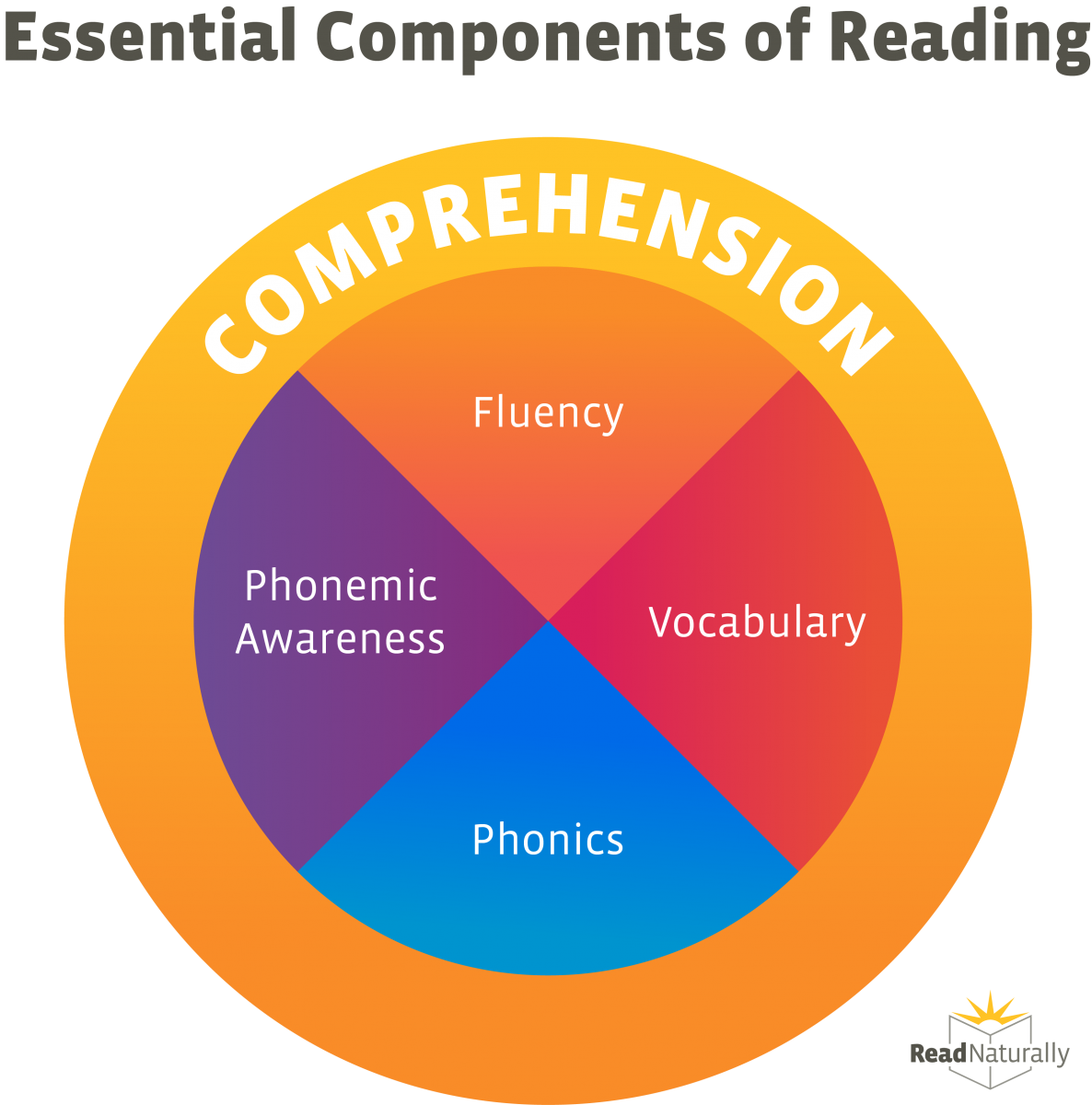 In accordance with our commitment to deliver reading programs based on research-based instructional strategies, Read Naturally’s programs develop and support the five (5) components of reading identified by the National Reading Panel—phonemic awareness, phonics, fluency, vocabulary, and comprehension.
In accordance with our commitment to deliver reading programs based on research-based instructional strategies, Read Naturally’s programs develop and support the five (5) components of reading identified by the National Reading Panel—phonemic awareness, phonics, fluency, vocabulary, and comprehension.
Phonemic Awareness
Phonemes, the smallest units making up spoken language, combine to form syllables and words. Phonemic awareness refers to the student’s ability to focus on and manipulate these phonemes in spoken syllables and words. According to the National Reading Panel, teaching phonemic awareness to children significantly improves their reading more than instruction that lacks any attention to phonemic awareness.
 Learn more about phonemic awareness
Learn more about phonemic awareness
Phonics
Phonics is the relationship between the letters (or letter combinations) in written language and the individual sounds in spoken language. Phonics instruction teaches students how to use these relationships to read and spell words. The National Reading Panel indicated that systematic phonics instruction enhances children’s success in learning to read, and it is significantly more effective than instruction that teaches little or no phonics.
 Learn more about phonics
Learn more about phonics
Fluency
Fluent readers are able to read orally with appropriate speed, accuracy, and proper expression. Fluency is the ability to read as well as we speak and to make sense of the text without having to stop and decode each word. The National Reading Panel’s research findings concluded that guided oral reading and repeated oral reading had a significant and positive impact on word recognition, reading fluency, and comprehension in students of all ages.
 Learn more about fluency
Learn more about fluency
Vocabulary
Vocabulary development is closely connected to comprehension. The larger the reader’s vocabulary (either oral or print), the easier it is to make sense of the text. According to the National Reading Panel, vocabulary can be learned incidentally through storybook reading or listening to others, and vocabulary should be taught both directly and indirectly. Students should be actively engaged in instruction that includes learning words before reading, repetition and multiple exposures, learning in rich contexts, incidental learning, and use of computer technology.
 Learn more about vocabulary
Learn more about vocabulary
Comprehension
Comprehension is the complex cognitive process readers use to understand what they have read. Vocabulary development and instruction play a critical role in comprehension. The National Reading Panel determined that young readers develop text comprehension through a variety of techniques, including answering questions (quizzes) and summarization (retelling the story).
 Learn more about comprehension
Learn more about comprehension
Note: Progress in reading does not necessarily result in progress in spelling. Spelling instruction is needed to develop students’ spelling skills.
 Learn more about spelling
Learn more about spelling
For more information
 Learn more about the National Reading Panel
Learn more about the National Reading Panel
 Intervention programs that address these reading components
Intervention programs that address these reading components
Bibliography
Mehta, P. D., Foorman, B. R., Branum-Martin, L., & Taylor, W. P. (2005). Literacy as a unidimensional construct: Validation, sources of influence and implications in a longitudinal study in grades 1–4. Scientific Studies of Reading, 9(2), pp. 85–116.
National Reading Panel. (2000). Teaching children to read: An evidence-based assessment of the scientific research literature on reading and its implications for reading instruction. Washington, DC: National Institute of Child Health and Human Development.
 In accordance with our commitment to deliver reading programs based on research-based instructional strategies, Read Naturally’s programs develop and support the five (5) components of reading identified by the
In accordance with our commitment to deliver reading programs based on research-based instructional strategies, Read Naturally’s programs develop and support the five (5) components of reading identified by the 



